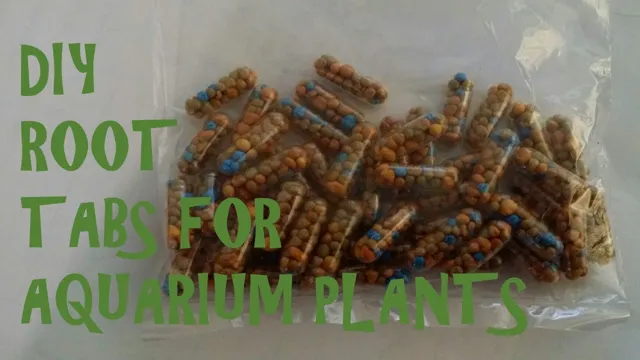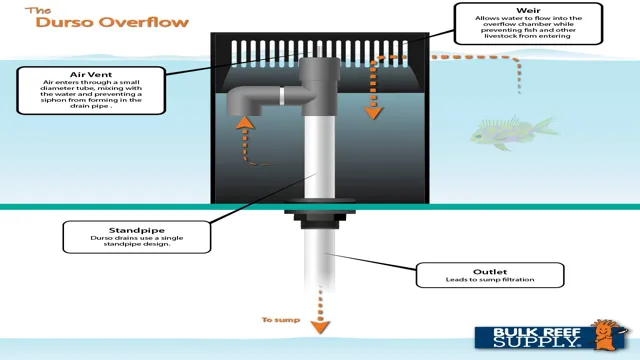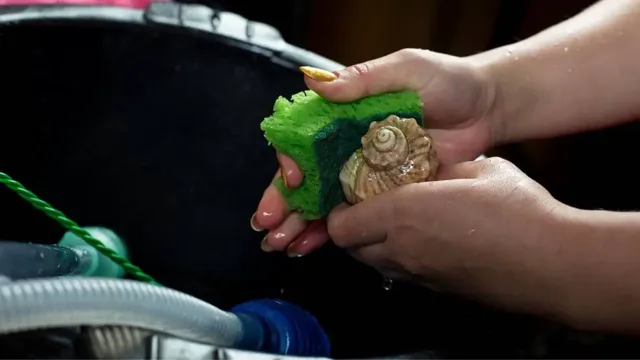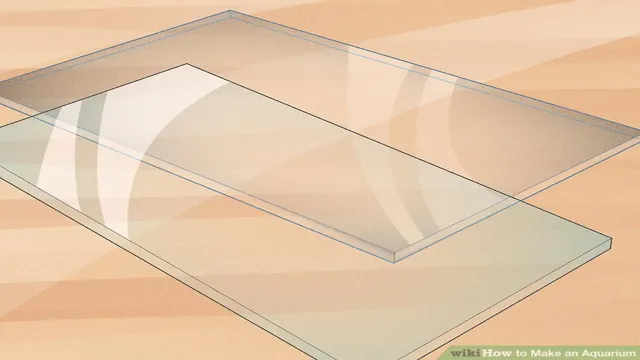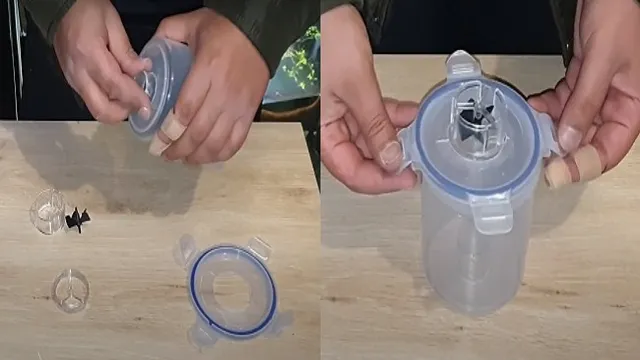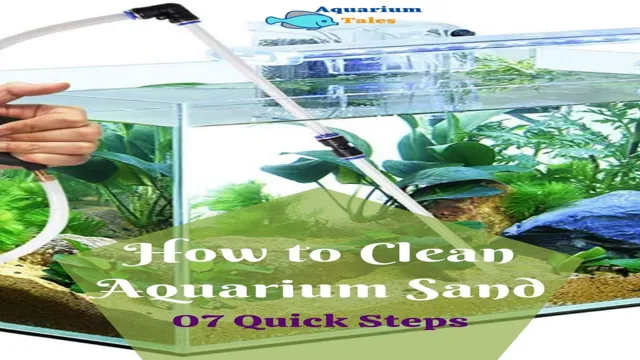Aquarium plants can be a great addition to any tank, providing not only aesthetic appeal but also serving as a source of oxygen for aquatic life. However, have you ever struggled with keeping your plants anchored and rooted firmly in place? Fear not, as we’ve got you covered! In this blog post, we’ll be discussing the tips and tricks on how to make aquarium plants root, ensuring that your plant life remains healthy and thriving in your tank. From the right substrate to optimal lighting conditions, developing a lush aquatic garden is an art form that requires a combination of science and creativity.
So, sit back and soak up the knowledge as we dive in (pun intended!) to explore everything you need to know about making aquarium plants root.
Understanding Rooting
Aquarium plants can be a beautiful addition to any underwater environment. To ensure their optimal growth, it is essential to know how to make aquarium plants root. Rooting is the process of allowing the plants to establish themselves in the substrate.
To do this, the plant needs a strong root system to absorb nutrients and anchor itself. One way to encourage rooting is by providing a nutrient-rich substrate. Substrates with a high concentration of iron and other essential trace elements can stimulate healthy root growth.
Another method for encouraging rooting is by pruning the plants regularly. This will promote the development of a more extensive root system by redirecting the plant’s energy towards the roots. Lastly, adequate lighting and a consistent water temperature are also vital to promote healthy root growth.
If you follow these steps, you’ll be on your way to a thriving aquarium with lush, rooted plants.
Selecting Plants that are Easy to Root
When it comes to selecting plants that are easy to root, it’s essential to understand what rooting actually is. Rooting refers to the process by which a plant develops new roots, allowing it to establish itself and grow in new soil or medium. Some plants are easier to root than others, and understanding what makes a plant easy to root can help you choose the right ones for your garden.
Generally, plants with soft, fleshy stems are easier to root than those with woody stems. This is because softer stems contain more water, which helps them root more easily. Additionally, plants that grow quickly and vigorously, such as herbs or succulents, are often easier to root than slower-growing plants.
By selecting plants based on these factors, you can increase your chances of success when propagating new plants from cuttings.
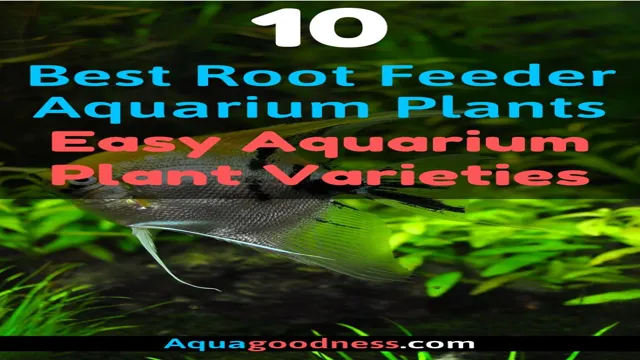
The Necessary Nutrients and Substrate
When we talk about rooting, we are essentially talking about the process of growing roots for a plant. This process is crucial to the growth and survival of the plant, as it is through these roots that the plant absorbs the necessary nutrients and water from the soil. The root development begins with the propagation of seeds, cuttings, or transplants.
It is important to provide the necessary nutrients and substrate to facilitate the rooting process. Nutrients such as nitrogen, phosphorus, and potassium are essential for plant growth. Substrates such as peat moss, vermiculite, and perlite provide the necessary support and structure for the roots to grow.
It is also important to provide adequate light and moisture for the plant, as these factors can affect the rooting process. Understanding the depth and spread of the roots is critical as well, as this will help determine how much space and support the plant requires to grow properly. Overall, the rooting process is an intricate and vital part of a plant’s growth, and providing the necessary nutrients and substrate can ensure its success.
Preparing the Plants for Rooting
If you want to make your aquarium plants root, it’s important to take the necessary steps to prepare them before placing them in the water. First, make sure to trim any dead or yellowing leaves from the plant, as these can hinder new growth. Then, gently rinse the plant in clean, room temperature water to remove any dirt or debris. (See Also: How to Make an Aquarium Stand: A Step-by-Step Guide for Beginners)
Before placing the plant in the aquarium, it’s a good idea to remove any excess leaves or stems that may fall off and cause ammonia spikes in the water. You can do this by using a sharp pair of scissors or pruning shears. Once you have prepared the plant, it’s time to plant it in your aquarium substrate.
Be sure to push the plant deep enough so that its roots are fully covered by the substrate. With the right preparation, your aquatic plants will be well on their way to establishing healthy roots in your aquarium.
Cleaning the Plant
If you want to propagate your plants, one of the first things you need to do is to prepare them for rooting. This involves cleaning the plant to get rid of dust, dirt, and pests that may hinder healthy plant growth. You can use a damp cloth or sponge to gently wipe off any dirt and dust from the leaves and stem.
For stubborn dirt or pests, you can use a solution of water and mild soap or neem oil to gently spray the plant. This will help to nourish the plant and also repel any pests that may be lurking around. It’s important to note that you should not overwater the plant at this time, as it may rot and die.
Instead, wait until the soil dries out before watering again. By cleaning your plants, you’re not only preparing them for rooting, but also ensuring their longevity and health.
Trimming and Pruning the Plant
Preparing your plants for rooting is a crucial step in the propagation process. Trimming and pruning your plant before rooting not only encourages new growth but also ensures that it’s in its healthiest state possible. The first step is to remove any damaged, diseased, or dead foliage and stems.
These parts of the plant can encourage rot and disease in the new roots, so it’s best to eliminate them. Next, trim back any leggy branches to encourage new growth at the base of the plant. You can also pinch back the tips of the stems to encourage branching.
However, make sure not to trim back too much, or you risk stressing the plant. Finally, if the plant has any flowers or fruit, remove them as they can divert the plant’s energy away from root development. With these simple steps, your plant will be ready for rooting and set up for success.
Pre-Soaking the Plant
Pre-soaking the plant is an important step in preparing the plants for rooting. This process involves soaking the plant cuttings in water or a rooting hormone solution for a short time before planting them in soil. Pre-soaking can help to increase the success rate of rooting and promote healthy growth of new roots.
The water or rooting hormone solution initiates the activation of the cutting and provides moisture to the stem, minimizing the risk of wilting or damage. Additionally, soaking in a rooting hormone solution can also encourage faster rooting and improve the overall strength of the newly formed roots. When pre-soaking, it’s crucial to remember not to soak the cuttings for too long, as they may become waterlogged and susceptible to rotting.
A good rule of thumb is to soak the cuttings for approximately 30 minutes before planting. With this simple step, you can significantly increase your chances of success when propagating your plants.
Rooting Techniques to Enhance Success
If you’re struggling with getting your aquarium plants to root, don’t worry – there are several rooting techniques that can help improve your chances of success. First and foremost, ensure that your plants are healthy and free of any disease or damage before attempting to root them. Next, try using root tabs or liquid fertilizers to help stimulate root growth. (See Also: How to Acclimate Fish to New Aquarium – A Step-by-Step Guide to Ensure Their Survival)
You can also use a rooting hormone to encourage the formation of roots. Be patient and avoid disturbing the plants while they root, as this can cause stress and delay the rooting process. Another useful tip is to add decorative pebbles or other substrate to your aquarium, which can help anchor the plants and encourage root growth.
Remember, successful rooting requires a bit of patience, but with the right techniques and a healthy environment, your aquarium plants will thrive.
Water Propagation
Water propagation is a simple and effective way to propagate plants and help them grow new roots. However, to maximize the success rate of rooting, there are a few techniques you can use. First, ensure that the cutting is taken from the right spot on the plant – typically a new growth tip.
Next, make a clean cut with sharp scissors or pruning shears, and make sure it is at a 45-degree angle. Remove any leaves from the bottom of the cutting, leaving only a couple at the top to aid in photosynthesis. Once the cutting is prepared, place it in a jar of clean water, ensuring that the bottom 1-2 inches are submerged.
Change the water out every few days, keeping it clean to reduce the risk of mold and bacteria buildup. You may also choose to add a rooting hormone to the water to encourage root growth. Once roots have emerged, transfer the cutting to soil and continue to water and care for it as normal.
By following these techniques, your water propagation success rate will increase, and you’ll be able to enjoy a house full of thriving plants.
Substrate Propagation
When it comes to substrate propagation, rooting techniques play a crucial role in enhancing the success rate. One effective rooting method is stem cutting, which involves cutting a section of the stem and treating it with rooting hormone before planting it in the substrate. Another option is leaf cutting, where leaves are cut and treated with hormone before being laid flat on the substrate until new roots emerge.
For more challenging plants, layering can be used, where a section of the stem is bent and buried in the substrate while still attached to the parent plant, allowing it to develop roots before being separated. By using these techniques, propagators can increase their chances of successfully growing new plants from cuttings and expanding their plant collections.
Tips to Promote Rooting
If you’re struggling to get your aquarium plants to root properly, there are a few tips and tricks you can use to promote healthy root growth. First, make sure your aquarium substrate is rich in nutrients and has a good balance of sand, gravel, and organic matter. This will provide the perfect environment for your plants to take root and grow.
Additionally, consider using root tabs or other fertilizers specifically designed to promote root growth. Another great option is to use a rooting hormone, which can help stimulate root growth and improve overall plant health. Finally, make sure your aquarium has proper lighting and CO2 levels, as these factors can also greatly impact root growth.
With these tips in mind, you should be able to successfully promote healthy root growth in your aquarium plants and enjoy a thriving underwater ecosystem. (See Also: How to Make a Cardboard Aquarium: A Step-by-Step Guide)
Conclusion
In conclusion, making aquarium plants root is a bit like building a strong marriage. It takes patience, care, and attention to detail. First, you must choose the right plants for your aquarium, just as you would choose the right partner for a happy marriage.
Then, you need to create a stable environment for the plants to thrive, much like a stable home environment is crucial for a successful marriage. Finally, you must provide the necessary nutrients and lighting to help the plants root and grow, just as you would provide love and support to your significant other. With a little bit of effort and dedication, you’ll soon have a flourishing aquatic garden and a happy plant family – just like a happy marriage!
FAQs
What are the best plants for rooting in an aquarium?
Some of the best plants for rooting in an aquarium include Java fern, Amazon sword, Ludwigia repens, and Anubias.
How should I prepare the substrate for aquarium plants rooting?
You should create a layer of nutrient-rich substrate, such as fine-grain sand or gravel, and add root tabs to provide additional nutrients for the plants.
Is CO2 injection necessary for aquarium plants rooting?
While CO2 injection is not necessary, it can greatly benefit aquarium plants by providing them with additional carbon, which helps them grow faster and more robustly.
How often should I fertilize aquarium plants for rooting?
You should fertilize aquarium plants for rooting once or twice a week with a balanced fertilizer that includes essential nutrients such as nitrogen, phosphorus, and potassium.
Can I propagate aquarium plants for rooting?
Yes, many aquarium plants can be propagated by cutting them and replanting the cuttings in the substrate. This is a great way to create new plants and fill out your aquarium.
How much light do aquarium plants for rooting need?
The amount of light needed for aquarium plants for rooting depends on the specific species, but in general, most plants need at least 8-10 hours of light per day to grow and thrive.
What are some common problems with aquarium plants rooting, and how can I fix them?
Common problems with aquarium plants rooting include algae growth, nutrient deficiencies, and poor water quality. To fix these issues, you should maintain a consistent fertilization and water change schedule, control lighting and CO2 levels, and regularly prune and remove any dying or decaying plant matter.

